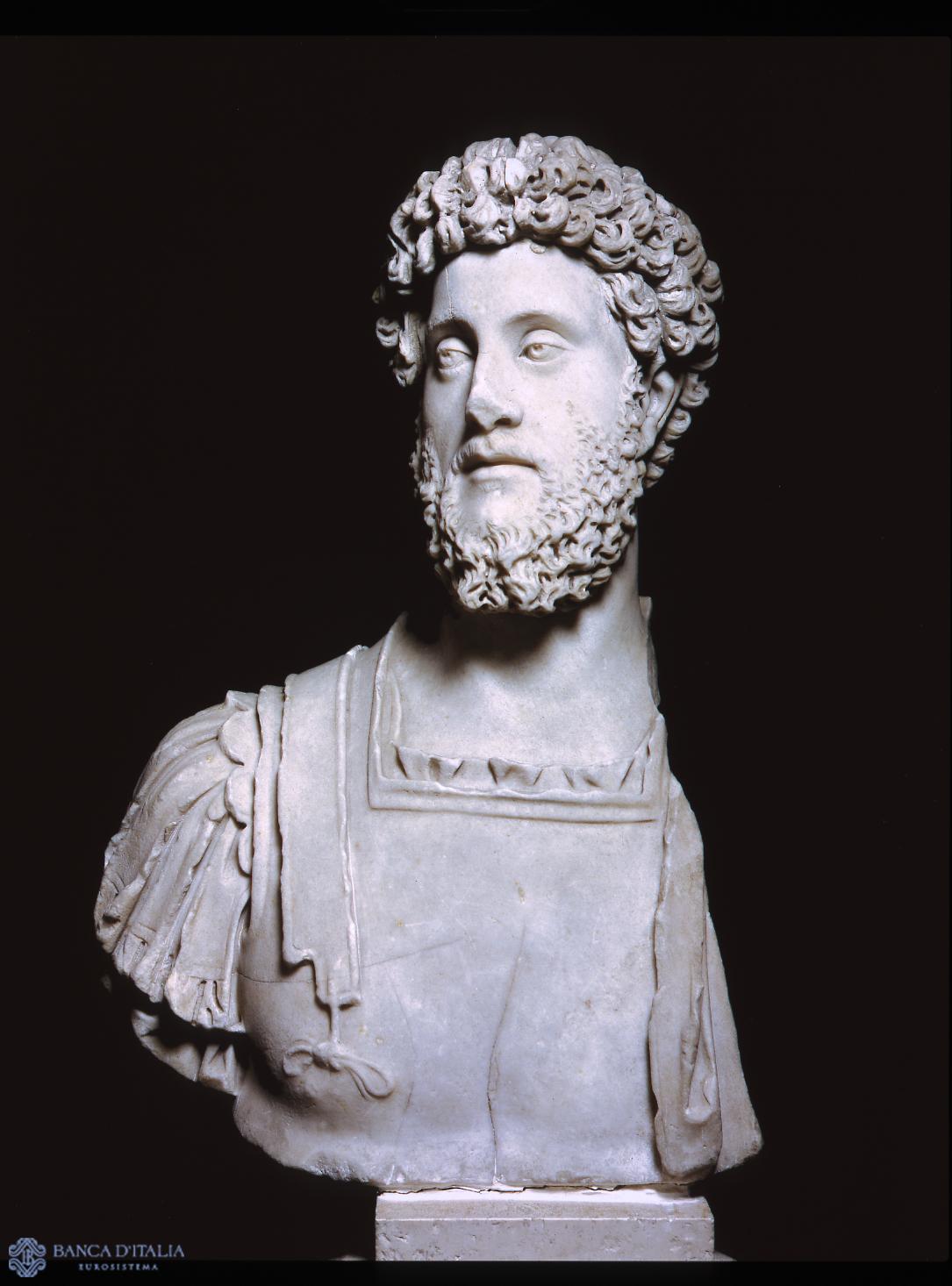The bust in lunense marble is of the emperor Commodus, son of Marcus Aurelius and member of the Antonine dynasty, who came to power in AD 180 and was killed in AD 192. The emperor had himself portrayed with curly hair and thick beard ‘in the Greek fashion’, like his father; his features are extremely true-to-life and resemble those depicted on coins minted in AD 185. Although the bust is damaged in several places and missing the left shoulder, the young prince’s features are very clear. Similarities with other portraits of Commodus include the melancholy expression, long face, half-closed eyes and narrow nose.
It was during the reign of this eccentric emperor that ancient society entered a period of crisis and a new concept of sovereignty emerged, in which the Roman prince was transformed into a god-like autocrat in the Oriental mould. Imperial portraits embodied the new school of thought and lead to a formal abstraction that gained currency in portraiture during the age of Constantine. Commodus’ self-reincarnation as the god Hercules in connection with the promises of salvation offered by his religious programmes is apparent in the tendency to glorification and austerity that marks the style in which the emperor chose to transmit his image.
Ritratto di Commodo
Portrait of Commodus
Sculpture
2th century AD
Portrait

Date
Late 2nd century
Material and technique
Lunense marble
Measurements
67 x 45 cm
Compiler
Alessandro Zuccari
